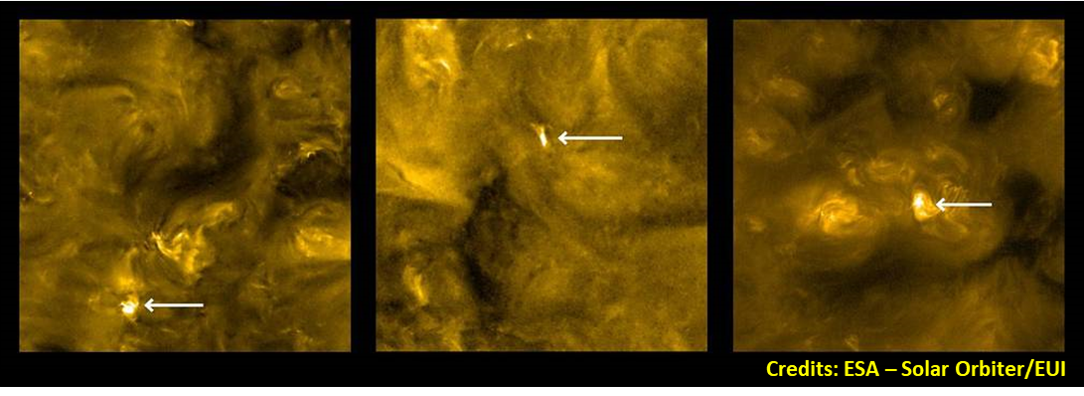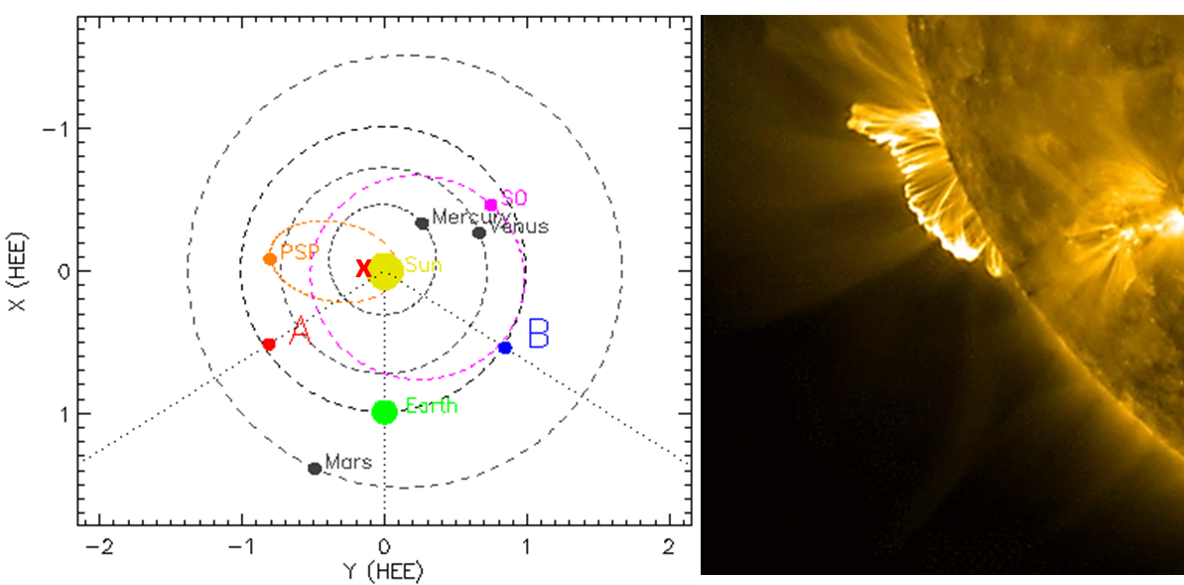The article underneath was based on ESA's Solar Orbiter newsitem released on 14 December. The papers from the Special Issue of Astronomy & Astrophysics can be consulted here.
Solar Orbiter ("SolO") was launched on 10 February at 04:03UTC from Cape Canaveral, Florida. After a 3-month commissioning phase, during which the spacecraft and its instruments were tested for proper functioning, SolO entered its cruise phase on 15 June 2020. This cruise phase included three gravity assists (two past Venus and one past the Earth) that have guided Solar Orbiter now on a trajectory much closer to the Sun. During this period, the spacecraft sampled its local environment while its telescopes underwent several calibration campaigns to get ready for science operations near the Sun. This science phase started after the recent Earth flyby on 27 November (see this STCE newsitem).
So, one would not expect that SolO would generate a lot of science during its cruise phase, but that's exactly what happened. In fact, so many great scientific discoveries and observations were made that Astronomy & Astrophysics dedicated a Special Issue to it. Underneath a few examples to illustrate the importance and variety of the findings made by SolO so far.
From a distance of 77 million km, The Extreme Ultraviolet Imager (EUI) revealed the existence of very tiny explosions on the Sun already from its first-light images mid-2020 (see this STCE newsitem). These "campfires" are between 400 and 4000 kilometers in size and emit extremely short-waved ultraviolet light of high intensity for a short time. In EUV images, they appear as tiny, bright, short-lived spots. Though they are very small in size, it is believed that if sufficient in number, they could play a key role in explaining the million-degree-temperature of the Sun's outer atmosphere, the corona, which has defied explanation for many decades. As SolO will reach perihelions that will get it as close to the Sun as 42 million km in the coming years, this offers exciting prospects of the high-cadence, high-resolution imagery we can expect from this first-class EUV imager.


A good "campfire" can be seen in the upper right corner of this clip. Credits - Solar Orbiter/EUI Team/ESA & NASA
Late November 2020, Solar Orbiter observed its first widespread energetic particle event following a significant solar eruption on 29 November. The source region was still behind the Sun's east limb as seen from Earth (SDO/AIA image on the lower right), yet the eruption managed to reach a M4.4 peak in x-ray, produced a brief but weak proton flux enhancement, and was accompanied by a fast coronal mass ejection (CME; 1250 km/s - see this STCE newsitem). It's quite amazing that both Earth (GOES) and Solar Orbiter recorded an increase in the energetic particle flux, as they were magnetically very poorly connected to the blast region, unlike STEREO-A and the Parker Solar Probe (see the annotated sketch with the position of the spacecraft and planets underneath; the red cross marks the location of the eruption). Their positions indicate that the event spread over at least 230 degrees in solar longitude (angle "Earth-STEREO-A-SolO"). This kind of events and measurements help in determining how much of the spread was due to the size of the eruption, and how much to other physical processes.

The observation of an interplanetary CME in the solar wind data by SolO on 19 April 2020 contributed to the research field of stealth CMEs. These are CMEs with no apparent source location on the Sun. As such, they pose a challenge to space weather forecasters as it's much harder to tell if a CME is earth-directed or not, when it will arrive and what its intensity may be. In this case, the measurements of the ICME by SolO indicated that its magnetic field strength (20 nT) was about double that of a normal CME, suggesting a sizeable solar event. However, the problem was that the visible surface of the Sun was devoid of sunspots at that time. Eventually, researchers were able to trace the CME back to the eruption of a coronal cavity on 13 April.
On 4 June 2020, Solar Orbiter has also flown thru the tail of a comet. It was actually predicted that the spacecraft would fly through the tail of comet ATLAS (C/2019/Y4), but only after SolO had alreay been launched. So, the scientists did their utmost to get at least some of the instruments ready in time to acquire data. Though the comet was disintegrating and as such leaving only a faint tail, data from SolO's passage indicated that the surrounding magnetic field suddenly changed its polarity, which would be expected if the Sun's magnetic field were draped around a piece of the broken comet's nucleus. The annotated STEREO-A images underneath were made by its Heliospheric Imager HI1 just a few days before SolO would fly thru the comet's tail. The Sun is off the left of the image, and a faint tail is visible as comet ATLAS moves from the upper right to the lower left.

Solar Orbiter is now in its main science phase, with all teams preparing for its close pass of the Sun in March 2022. Already, the results obtained during SolO's cruise phase show how much great science has been done, and provide a good justification to expect many more exciting results.





